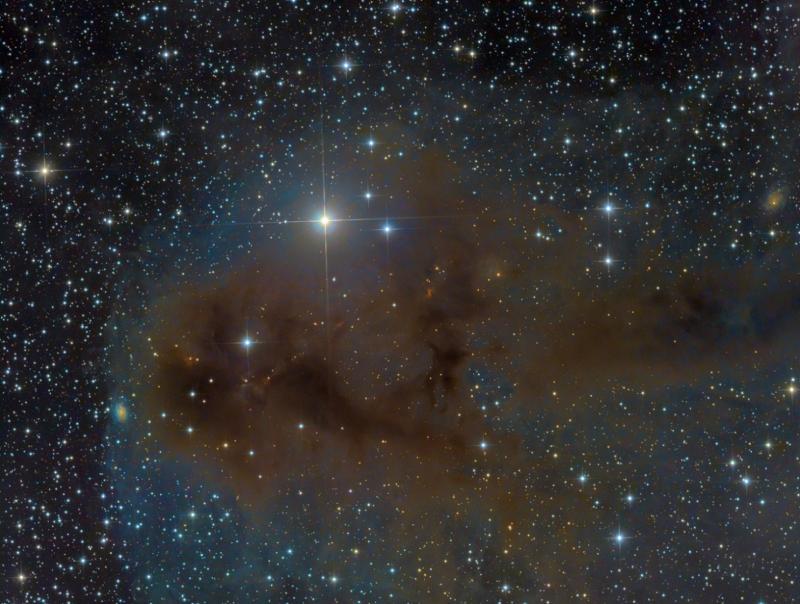First of all, well done, Ara Jerahian, taking this broadband image with a backyard telescope!

And second...
As a Color Commentator and lover of all blue things, I obviously had to identify the bluest object in the field, which is this blue star, HD 215038. It really
is a blue star, with a slightly negative B-V index, and it is the only star with a negative B-V index that I managed to find when I scoured the area with my software. So your image, Ara Jerahian, is so well color-balanced that it really does bring out the single bluest object in this field! Well done indeed!

As for the blue star, HD 215038, if we are to believe its uncertain Hipparcos parallax, the distance to it is about 1,000 light-years, which is the same as the distance to the dark cloud LDN 1251 itself.
Fascinating.
APOD Robot wrote:
Distant background galaxies also lurk on the scene, buried behind the dusty expanse.
Well, I found a possible background galaxy, which looks pretty much like a fine face-on spiral galaxy to me. (Or else it's just another patch of illuminated nebulosity.)
Have you found any others?
APOD Robot wrote:
Across the spectrum, astronomical explorations of the obscuring interstellar clouds reveal energetic shocks and outflows associated with newborn stars, including the telltale reddish glow from scattered Herbig-Haro objects seen in this sharp image.
Well, the only reddish object that I found in the image is the object that I marked with a number 3. It looks like a faint emission nebula (with a yellow star inside it) to me. Number 1 looks definitely like a young star with jets (and, I guess, Herbig Haro objects, which are illuminated patches of nebulosity caused by jets from the young star hitting the dusty environment.) As what number 2 is, I don't know!
 Lynds Dark Nebula 1251
Lynds Dark Nebula 1251
